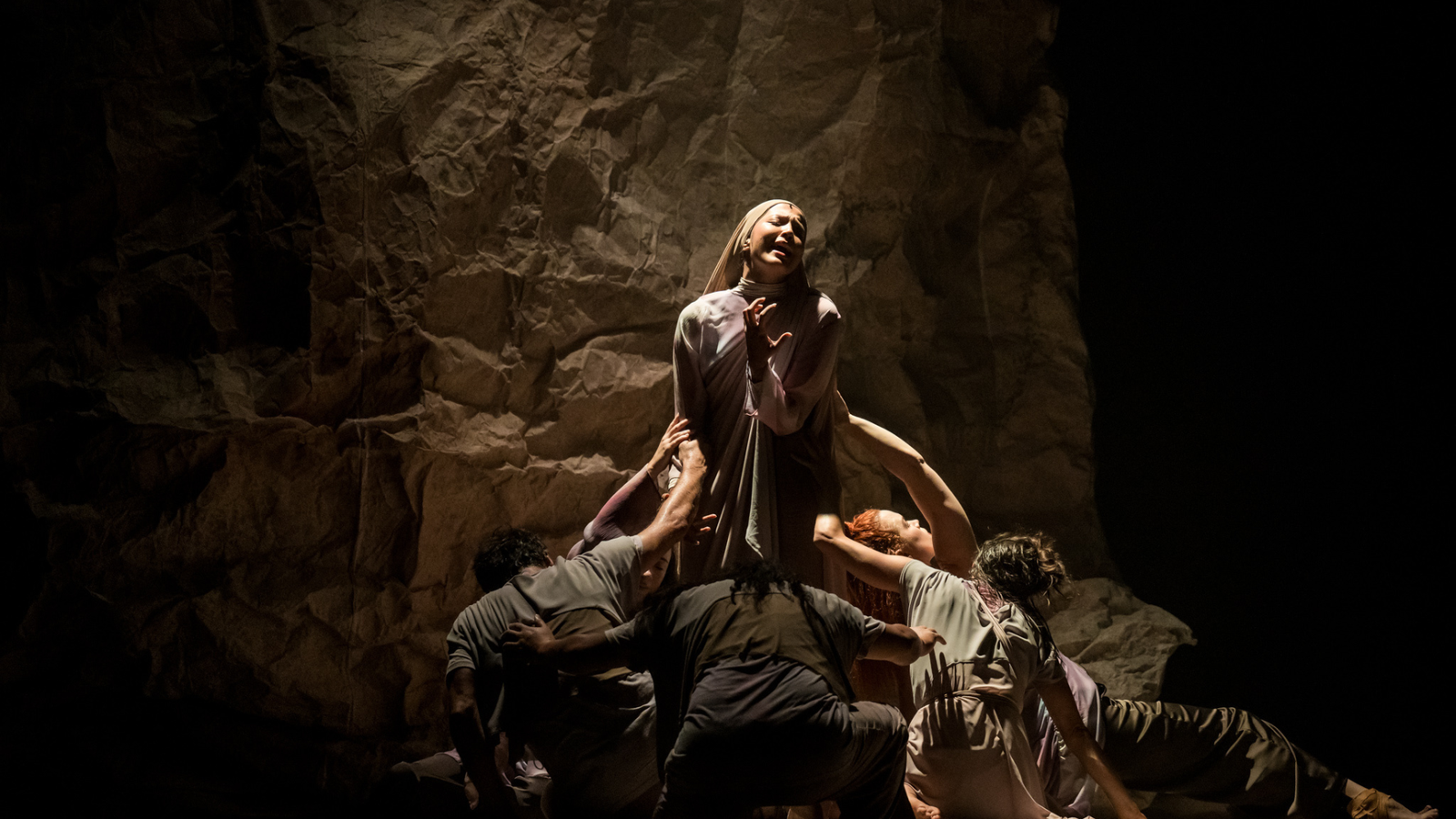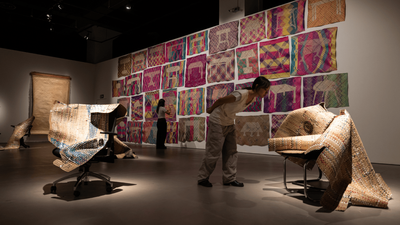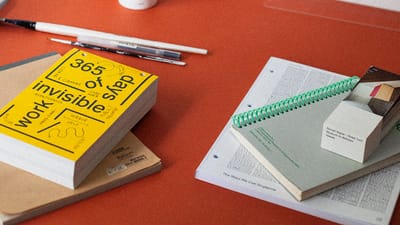A hush falls over the audience as the theatre’s lights dim and a low, guttural sound rumbles forth from behind closed curtains. This grows into a wave of human voices that crests as the curtains rise. A naked rock face looms over ten bodies that lie in tattered, mud-coloured garments. Their lips do not move; it is as if the rocks themselves are sounding a quiet alarm. This ghostly, tectonic hum recedes into the background as the atmosphere erupts into moans, sobs, chants, the cries of birds and frogs, the creaking of swaying trees—a scene of devastation materialised in sound. The bodies on the floor awaken and advance towards us, as if risen from the dead. They are the earth’s memories of the life it once hosted, reanimated in a post-anthropocenic dream.
It is difficult to pin down “SUARA / ORO RUA” to a particular genre. It’s both a novel take on the electronic opera, as well as a dance-theatre work centering ecological themes. The show, which made its debut at this year’s Singapore International Festival of Arts, uses these choreo-musical elements to decentre human agency and cast nature as the protagonist. It’s the brainchild of Safuan Johari, a composer and sound designer from Singapore, and Eddie Elliott, a choreographer from Aotearoa New Zealand (ANZ).
“SUARA / ORO RUA” presents an ensemble cast of loosely conceptualised characters—played by 10 virtuosic artists whose performances are suspended in Safuan’s phenomenal electronic-orchestral score. A contingent of six ANZ dancers—Brydie Colquhoun, Bianca Hyslop, Sean MacDonald, Hannah Tasker-Poland, Tupua Tigafua and Matiu Hamuera—move alongside four Singapore-based vocalists: Aisyah Aziz, Rosemainy Buang, Felicia Teo Kaixin and weish.
Each star sparkles thanks to their unique cultural influences and singular artistic training; together, this bright constellation creates an aural-visceral experience that is often rapturous. At the same time, these stellar performances are brought back to earth by the discrepancies between the work’s themes and its vocal-visual images, between the narratives that unravel on stage, and those that unravel in my mind as a spectator.
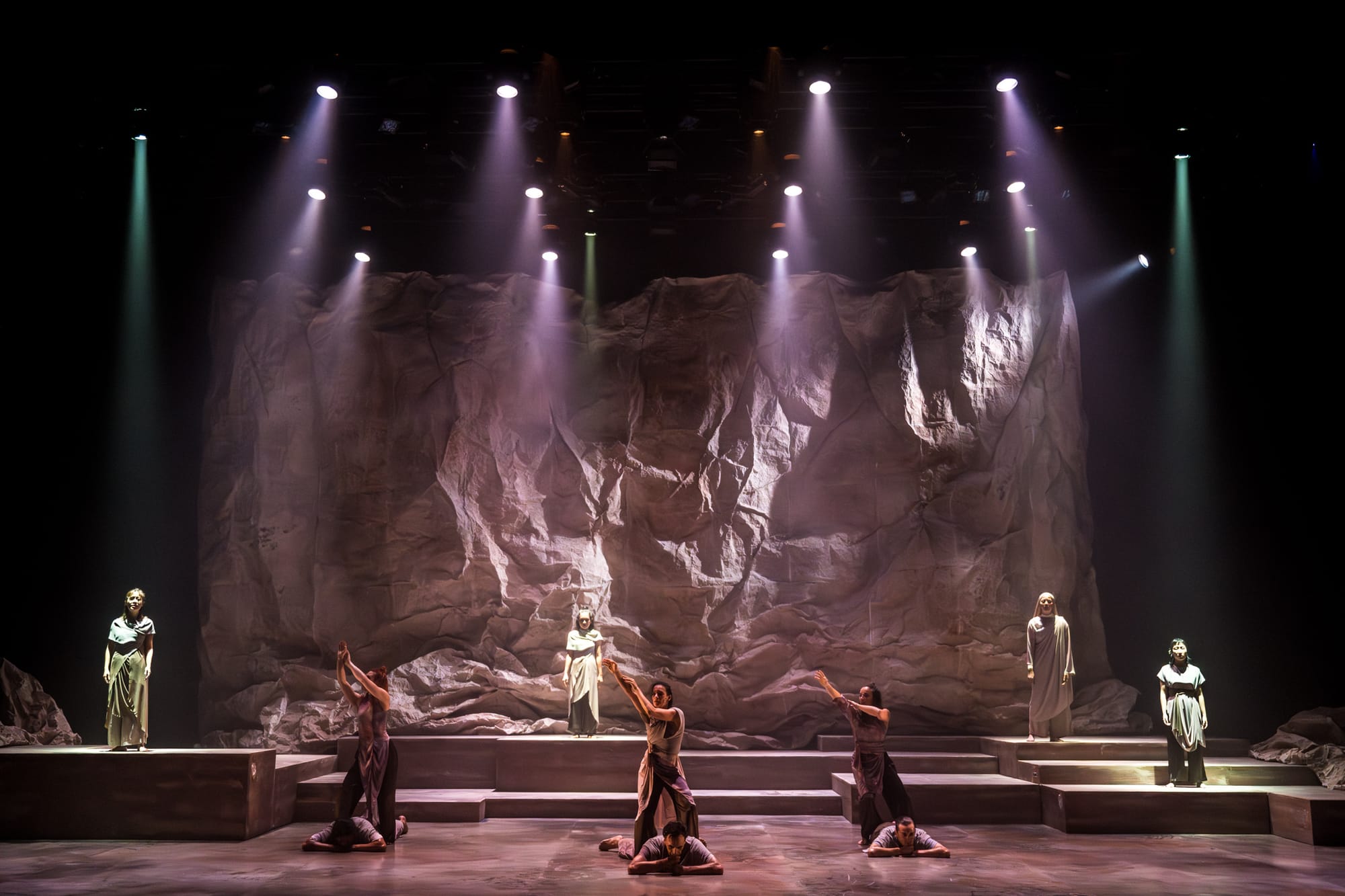
“SUARA / ORO RUA” is an extended exploration of the breath and voice in what Safuan describes as “a post-verbal world”. It suggests that the geological soundscape imagined in the aftermath of human life will retain undeniably human echoes and reflections. The full, ambient sound that signals the start of the performance plunges us into remote forests and their non-human creatures that screech, hiss and chatter. Drum beats form the bones of this sound at a range of qualities, from the guttural and timpanic to the melodious and xylophonic. As I absorb these sounds, I imagine hands beating drums made of skin, bamboo and wood, punctuating an airy atmosphere created by an unseen but immersive orchestra of digital strings.
The work’s title comprises both Malay and Māori phrases. Suara, in Malay, translates to “sound” or “voice” in English. Oro rua, in Māori, means “to resonate”. I took this title as an allusion to both the vocal performances that are this show’s fulcrum, as well as the artists’ efforts to give voice to earth. While the latter falters, the vocal performances are rich with echoes of ancestral ties—specifically human ancestors and what they bequeath us in formal artistic practices across multiple disciplinary backgrounds. The score, for instance, captures the many formal and traditional roots that channel these ancestral energies, be they the ancestors of precolonial South-east Asian song, the classical opera of Renaissance Europe, or the jazzy riffs of the Black Atlantic.
Safuan’s arrangement conjures a South-east Asian eléctrica selvática, a Latin American musical genre that mixes pre-Columbian folkloric elements with electronic music. Arboreal sounds, indigenous voice and instrumentation are artfully woven into a digital musical fabric that recreates the primaeval human experience of life within cloud forests. Against this weft, ancestral musical and choreographic signatures—sometimes full-bodied, sometimes wispy—unfurl not only in stylised chants and vernacular instrumentation, but also in each artist’s performance. weish transmutes long strings of wordless vocalisations into a poetic sound that is both heartfelt and heartrending; her capacities as a vocalist are truly astounding. And South-east Asian sonic histories are wordlessly and seamlessly delivered through Rosemainy Buang’s and Aisyah Aziz’s long and arresting solos.
“SUARA / ORO RUA” feels like a fitting next step in Safuan’s evolution as an experimental musician. He has successfully created an archipelagic sound, incorporating vernacular musical forms from South-east Asia within a global music subculture that is invested in a return to the pre-modern. From his DJ-producer days as Max Lane, to his foray into visual and performance art in the contemporary duo NADA, Safuan’s musical signature is a reconstitution of a range of electronic genres that conjure atmospheres. But his work, now spanning over 15 years, has also always involved nature as a non-human collaborator. His work resonates with other incredible homegrown Singaporean musical groups like The Observatory, which incorporates field recordings collected from nature—the atmospheric sounds of birds, insects and forests—generating a lush aural experience. This electro-ecological turn in Singaporean sonic art is tethered to global trends in electronic music that spatialise sound drawn from rural and forest sites, a sound that crescendos in the wake of climate crises. As sophisticated audio technologies flood markets, so do musical capacities to capture complex acoustic ecologies and play them back in high fidelity. It would seem that this genre of music is archiving the sound of endangered ecosystems on the eve of their erasure.
Elliott’s choreography distils a range of indigenous movement practices alongside Safuan’s verdant sonic landscapes. These are embodied by dancers engaged through Elliott’s company, Waiwhakaata Performance, each trained in or influenced by Māori, Samoan, and Welsh movement vocabularies, aesthetics and worldviews. I spoke with Elliott after the show, where he offered important context for how language functioned in rehearsals. Even within the dance company, performers spoke a range of different languages, including those above. Among the Singaporean musicians, many mother tongues undergird the beloved babble of Singlish: Javanese, Bahasa Melayu, Peranakan creole and of course, Mandarin Chinese.
After months of online discussions, first between the co-directors, and then with the performers, the ensemble came together to create “SUARA / ORO RUA” in less than one month of in-person rehearsals. It is an artistic work forged in contingency, traversing long distances, time-zone shifts, translations and technological glitches—a commendable artistic feat that makes the case for continuing the experiment of bringing together South-east Asian and Pacific island artists.
Through Safuan’s electro-ecological musical score and the work’s unique corralling of regional artists, “SUARA / ORO RUA” does grasp its lofty goals of bringing forth the sonic history of the earth and of human migration. We see this in the abundance of musical and movement forms of the Malay archipelago and the islands that constitute ANZ. For instance, Samoan and Tongan movements drawn from ANZ-born Samoan artist Tupua Tigafua’s practice inform a walking motif that appears prominently twice in the performance. It’s a gesture instantly reminiscent of tumpang lalu. This Malay term can be glossed as “excuse me” in English, but is also a more complex and untranslatable mode of genuflection, a stylised movement in Malay dance (and in everyday life) where one seeks permission to walk through or in front of others through one’s gestures. The walker bends into a low bow, with one arm outstretched, indicating the path forward.
Each appearance of this shared motif was a moment of recognition that testified to the cultural proximity of peoples with oceanic ties. Elliott’s revelation in the post-show dialogue that this convergence of forms was unintentional was deeply satisfying; this is a mark of success in good intercultural performance—the unearthing of ancestral ties that bind across space and time, emerging in the process of the intercultural encounter. However, these moments of clear cultural identity, marked through dance and musical technique are surprisingly few in the performance.
This brings me to one of the more tedious and longstanding problems facing intercultural performance: cultural and geographic dislocation. Cultural elements from the vast geographical realms of South-east Asia and the Pacific do surface, but as features that embellish a performance grounded in two essentially western performing art forms: the opera, and contemporary western dance. In the post-verbal world, will we sound and move here—in this space between South-east Asia and the Pacific—as others do in continental Europe or the North Atlantic? If yes, is this Euro-American cultural homogeneity the logical endpoint of our collective nomadisms?
Akbar Syadiq’s imposing set further exemplifies this issue of dislocation. Its primary feature is a tall backdrop that spans the entire height of the stage, resembling a steep, brown cliff face. Ramps and stairs project from its wide platform base onto the stage floor, which becomes a watery expanse upon which a dynamic diorama of music and movement in the post-disaster impasse unravels. Though spartan, this evokes the continental shelf at the edge of an ocean. But where is it? Which ocean, and which continental shelf?
“SUARA / ORO RUA” is a work born from the routes of cultural circulation that link the South-east Asian archipelago and the Pacific islands, both the old ones of trade and oceanic nomadism that characterise the Māori and Nusantara peoples, as well as the new ones brought about by the globalisation of the art world. While “SUARA / ORO RUA” evokes particular identities of the Asia-Pacific through its programme text and title, the work’s identity remains nebulous without this verbal contextualising. Must performance finally rely on the written word to reveal artistic intent and identity?
Rather than take issue with the individual artists behind this work, I believe this is symptomatic of larger issues of art-making in the region today. We have not, as makers and lovers of the performing arts of South-east Asia and the Pacific, sufficiently addressed the jarring cultural contradictions that make—in this instance—Māori and Malay voice and embodiment merely supplementary to Western operatic sound and Western Modern dance. Asia-Pacific contemporary performance, in its reflexive, decolonised and culturally aware form, demands more time, resources and more critical curatorial direction to address these deeply important concerns.
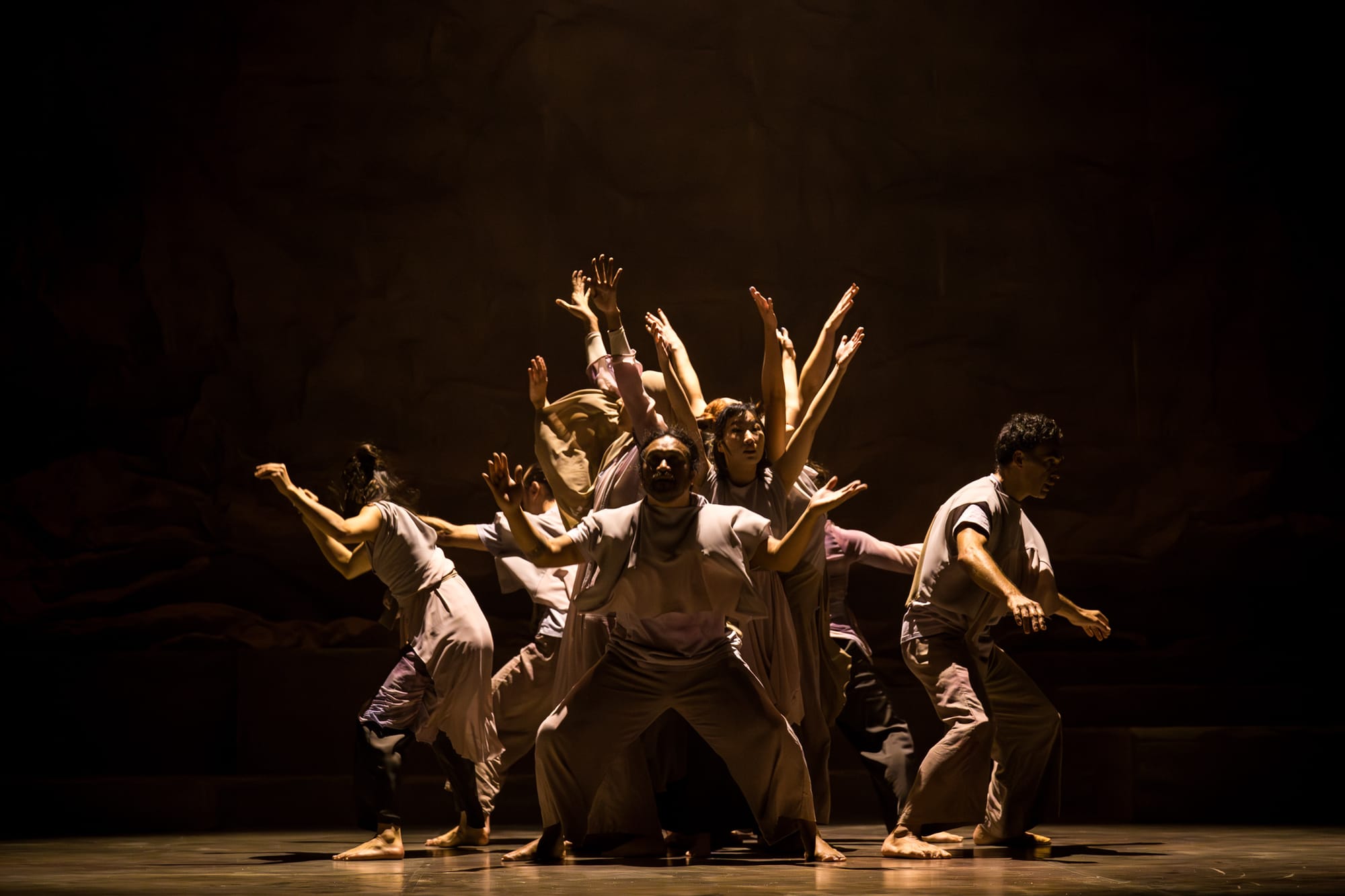
Conceptually, this ambitious project struggles to keep its promises of giving voice to the earth and of embodying the invisible “Te Kore”, a complex Māori concept for the “void” that exists beyond the world of everyday experience. In “SUARA / ORO RUA’s” present iteration—bearing in mind that this production marks the first time these artists have come together—these grand ideas do not always land. I suspect it’s because human artistic directors aren’t always prepared to relinquish human perspectives.
We live in an age of “planetary dysphoria”. Emily Apter, the philosopher and translator who coined the phrase in a 2013 essay, deconstructs the bilious aftertaste of anxiety that tinges our artistic imaginations of tomorrow. This mood of climate disquiet has dominated visual and time-based media art for decades now. Since the turn of the 21st century, audiences worldwide have witnessed a scalar shift in how climate futures are addressed in art. From visual artist Olafur Eliasson to theory-fictionist Reza Negarestani, object and text-centred art draws attention to the life-beyond-human-life on a planet that slowly turns on a geological and cosmic temporal axis.
Formal, body-centred practices—including singing, dancing, and theatre—often struggle to meaningfully displace and decentre the human, a move that’s been so effectively accomplished in other domains. The medium is the message, and the human body that sings or spins or gestures remains front and centre in every danced and sung articulation of the post-human. While classical, traditional and modern performing art forms have long relied on anthropomorphising nature through movement, costuming and vocalisation, these strategies flounder in the post-human moment, as they effectively re-humanise nature.
“SUARA / ORO RUA” does not take this route, and in doing so, is entering sparsely charted territory. The work is a paradox: both pioneering and experimental, but also troubled and limited by its assumptions of human spectatorship. A few more iterations might be in order for it to address this issue, which I understand as a technical one—of staging.
Staging is one aspect of performance that usually defaults to the proscenium setting, where the audience views live performance as if on an enormous flatscreen television. Post-human themes in performance demand a perspectival shift that offers us a view of the whole earth, one that exposes our planet as a fragile lump of cooling stardust spinning in the abyss. Rather than the perspective of the television viewer watching the aftermath of a disaster, the eco-critical performance asks the spectator to witness the earth as the cosmos does.
To illustrate this, I turn to another of the festival’s offerings: “Sun & Sea” by an artist trio from Lithuania. The work brings the outdoors indoors: it transports an entire artificial beach into the theatre space, where sunbathing beachgoers are splayed out on the sand as audiences view them, voyeuristically, from above. The work has been sweeping accolades since its 2019 Venice Biennale premiere precisely because it comes so close to decentering the human in a choral performance that is speckled with human bodies.
“Sun & Sea” could do this because it disrupts habits of visual perception that are taken for granted in the theatre. Here, audiences usually have floor-to-centre stage sightlines that are built into the architecture of the black box or the proscenium stage. In “Sun & Sea”, audiences get a view from above, a ceiling-to-floor view that quite literally effects a paradigm shift. We are alienated from easy-viewing practices as we gaze, god-like, upon the human performers below.
Yet in “SUARA / ORO RUA”, we sit back as we might in a concert hall, as we watch dance and listen to music. At the back of our mind might be the suggestions made in the programme booklet—that this is an opera of geological memory—but there is nothing in the execution that effectively reiterates this. I remember being drawn into the stunning performances and the absorbing, atmospheric music, but felt nothing of the cosmic sublime, or the awe-inspiring feeling of being a minor character in an infinite universe.
It is unlikely that the post-human earth will remember us as images of voice, the breath, movement, gesture and touch—because these are anthropocentric images in and of themselves. The earth is more likely to memorialise humanity in the way that it did the dinosaurs: as oil.
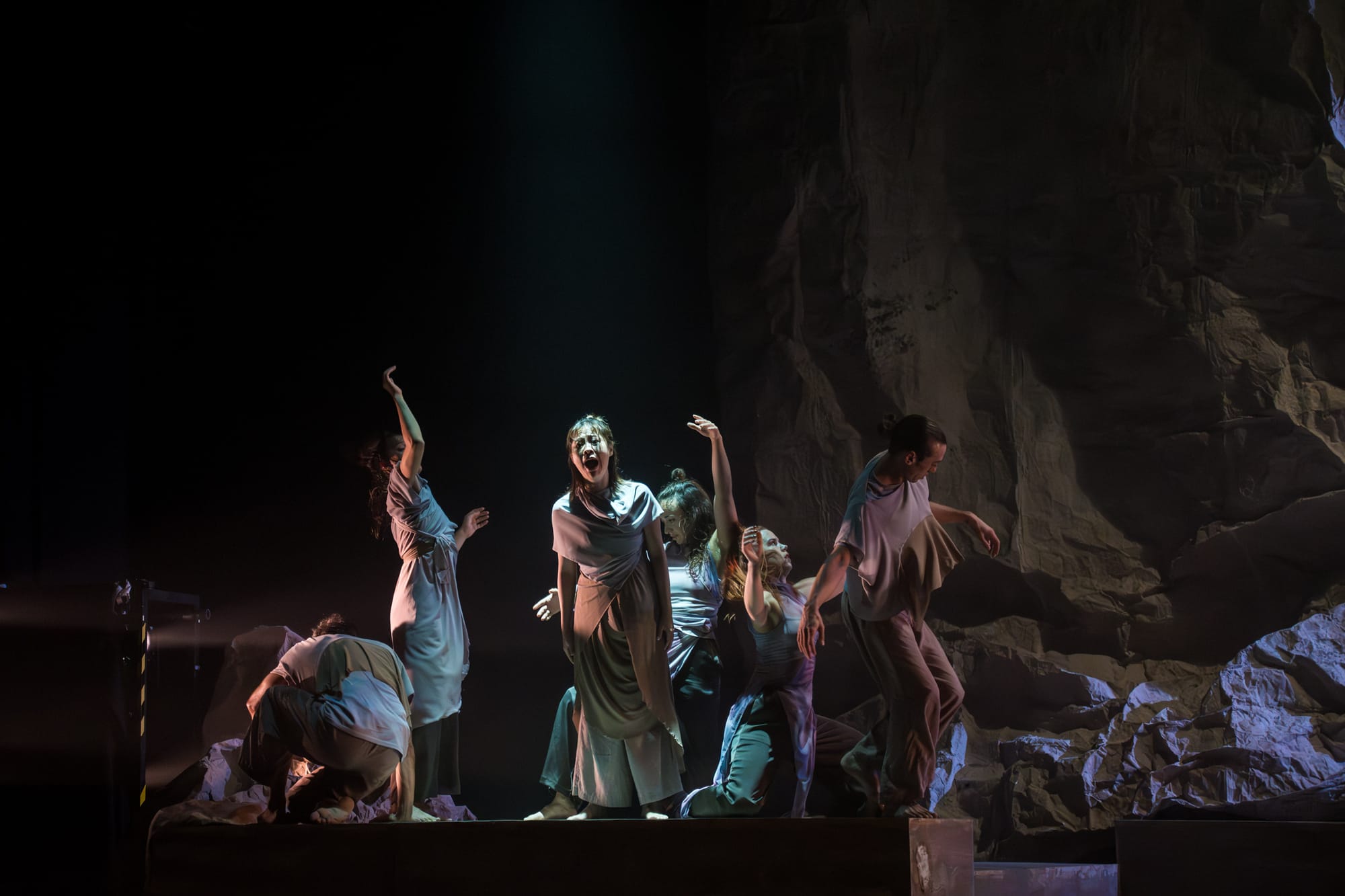
The day of the show’s premiere, the world watched, on computer, television and phone screens , another scene with macabre parallels unravelling in the theatre of real life. A massive landslide in Papua New Guinea (PNG) buried alive hundreds, in “dozens of meters of geomaterials”. The images of the disaster in the Pacific island nation are eerily reminiscent of the stage and set of “SUARA / ORO RUA”—an expanse of bald rock-face littered with the crawling bodies of people, dazed as they gather up the fragments of lost lives and search for remains of loved ones.
I bring up this parallel because these people awoke, confronting a world anticipated by Safuan and Elliott in “SUARA / ORO RUA”: a world where nature has wiped out man-made civilisational structures—and a world of linguistic failure. The PNG disaster encompassed several villages, including Kaokalam and Yambali, that house distinct socio-linguistic groups. The BBC reported that the affected villages were socially remote, cut off from each other by a lack of road infrastructure and the mutually incomprehensible languages that characterise the region. Language fails as the earth speaks. This is the idea at the heart of “SUARA / ORO RUA”, one worth developing further through prolonged artistic engagement. There is no forestalling the futures brought about by climate change; nature had upstaged Safuan and Elliott even before their premiere.
The disaster’s unfortunate timing and its uncanny resonances with the imagined disaster on stage makes “SUARA / ORO RUA” less a work of speculative fiction and more an exercise that rehearses the aftermath of impending disasters that are already unfolding around the world. This is a tragic reversal of the art world’s current preoccupations with apocalyptic disaster as performance. Performance—as nurse, as undertaker, as cook, as interpreter, as journalist, as oracle—becomes a means of survival in the wake of catastrophic events.
Like many of its ecological peers, “SUARA / ORO RUA” sits within a man-made “crisis time” of the art market. The work operates on two temporal levels: there’s rehearsal time, which is bracketed from the world outside the studio and allows artists the luxury of an elastic, slow-moving time for their work to develop and form, layer by layer; then there’s production time, which always feels too short, and is almost always designated by the demands of festival producers and venue partners, as well as the box office. Time is measured as money, and the clock is always ticking. Amidst these administratively engineered “emergency conditions”, entire theatrical worlds must be created, aftermaths of civilisations imagined, scored, choreographed, refined, and then staged. This artificial emergency of performance-making-under-duress is an absurd imitation of the real emergency in the wake of natural disaster and war: there’s no time and no room for stopping, only action. Do productions in the well-funded international festival circuit need to operate in this vein? Might collaborative and intercultural performance do more than simply mimic crisis relief?
These challenges make “SUARA / ORO RUA” an important work, as it stages, vocalises and embodies grief and fear, reminisces what we have lost (and are in the midst of losing) while also staging the beauty of a society of strangers brought together by crisis. Ultimately, rather than projecting the voice of a post-human earth, voice and gesture take the place of language in “SUARA / ORO RUA”, as voices of ancestors sing from the void, from a world after words.
Aparna R Nambiar is a dancer and a scholar of performance. Her artistic practice and writing have been nurtured in Singapore, through her many years living and working here as a dancer and co-founder of Chowk Productions. She is currently Assistant Professor of Dance at Davidson College North Carolina.
“SUARA / ORO RUA” ran from May 24th to 26th at the Singapore International Festival of Arts.
If you enjoy Jom’s work, do get a paid subscription today to support independent journalism in Singapore.
Letters in response to this piece can be sent to arts@jom.media. All will be considered for publication on our “Letters to the editor” page.

